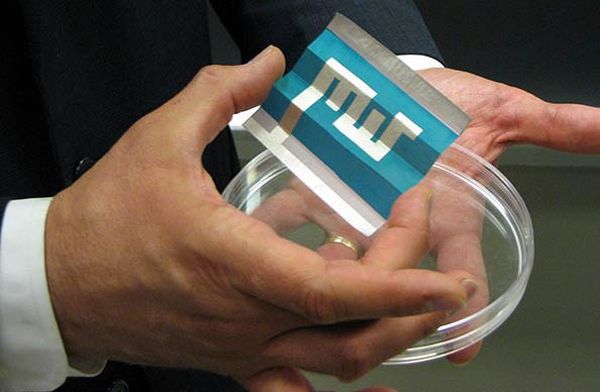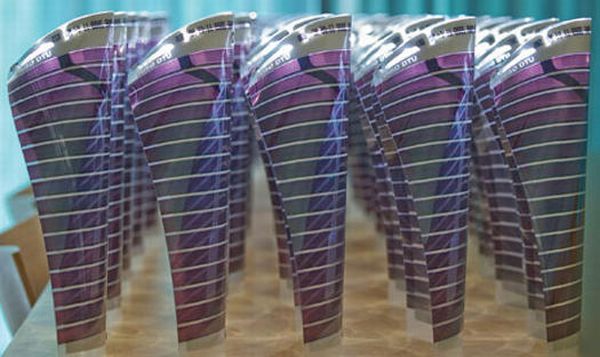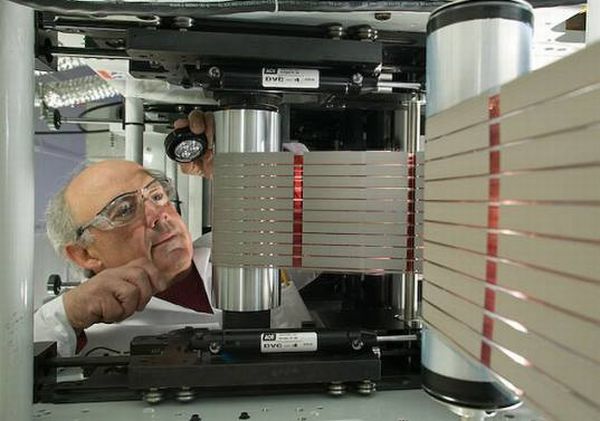
What is it?
Since their inception, conventional solar panels have been costly to produce. But with the spurt of recent advances made in the field of solar technology, researchers have managed to come up with a new type of flexible, large-sheet, reel-to-reel printable plastic solar cells that can be mass-produced in a cost effective way. These printable solar cells are created with particles of semi-conducting titanium dioxide that are coated with dyes that can absorb light. These particles are then immersed in an electrolyte and this solar cell solution is used as ink to imprint thin plastic films. Analogous to the working of an ink-jet printer, this polymer printing technology has been in use in over 20 countries.
Trends:
1. CSIRO Develops Printable Solar Cells:

Researchers from Commonwealth Scientific and Industrial Research Organisation (CSIRO) contrived flexible, ultra-thin and light solar cells. These advanced solar cells can be printed out like money at an efficient rate. And also, according to CSIRO, the solar cells can be used on water surface since they can float on water!
2. Cheap, printed solar LEDs to light up off-grid African villages:

Danish researcher Frederik Krebs has conscientiously created an LED lamp that can be conveniently applicable in many fields. Integrated within a lithe, printable solar panel, this lighting fixture could replace conventional lamps and even kerosene lamps, especially in those places where there are lack of proper electrical infrastructure. Printed out in reams, the dual light/solar panel can be rolled up to mimic a lamp, and has the potential to provide light to around 1.5 billion people around the world, who are currently living without electricity.
3. MIT makes more progress on printable solar cells:

Researchers from Eni-MIT Solar Frontiers Research Center have been successful in printing a solar cell on paper by using an organic nanoscale semiconductor material. Utilizing the ink-jet printer technology, the researchers have only managed to imbibe an efficiency of 1.5 to 2 percent to the solar cells, but the overall efficiency is expected to rise further as the technology improves in the coming years. Moreover, the solar cells have multiple layers, each of which can absorb different wavelengths of incident sunlight. Taking advantage of their docility these thin-film solar cells can be wrapped around plastic, paper, or metal to increase their efficiency to 15- 25 percent.
4. Inkjet-printable Solar Panels:

Konarka Technologies has conveniently come up with a printable solar panel film that utilizes a common inkjet printing process. Basically in this adroitly conceived technology, the ink inside the printer is replaced with the solar cell material and a thin flexible sheet of plastic is used in place of paper. Hence, the manufacturing process becomes much more easily achievable.
The Benefits:
Printable solar cells can provide us with a plethora of benefits, especially in comparison to conventional solar panels. First, when it comes to the cost factor, printable solar panels can unequivocally be cheap and mass-produced. Moreover, because of their malleable nature, they can be incorporated on rough and uneven surfaces. Some of them can be conceived to be thin enough to act as semi-transparent coverings on window surfaces. Also, as mentioned earlier, they can be made to float on water especially as a means of effectual space management (solar farms on land do tend to take up a lot of space).
The Lowdown:
Probably the major problem that can be associated with printable solar cells is their significantly lower efficiency (the percentage of electric power converted from incident light). The conventional polycrystalline and mono-crystalline solar panels exhibit an efficiency of around 19 percent, whereas printable solar cells have an efficiency of around the mark of less than 4 percent. Furthermore, they can also be easily damaged by intense sunlight, temperature fluctuations, high oxygen content and even windblown debris. But, in the years to come, researchers are looking forth for innovative methods to increase the efficiency to at least 10 percent, and also make the solar cells more adaptable to adverse conditions.
The Impact:
They can make a huge impact specifically when we judge the technology from the perspective of sustainability. Forgoing the need for all the complex paraphernalia of electrical wiring, such clean and ‘green’ technology imbibed devices can be used in relation to most surfaces and that too in a much more cost effective manner. Printable solar cells do make use of advanced nanotechnology in their production. With the development and effectual usage of nanoparticles, such solar cells can be made feasible and pliable in comparison to the traditional bulky solar panels. So, it may be sooner than later that one day we would be witnessing a worldwide solar power grid – generating a totally sustainable and clean form of power, utilizing printable solar cells.




